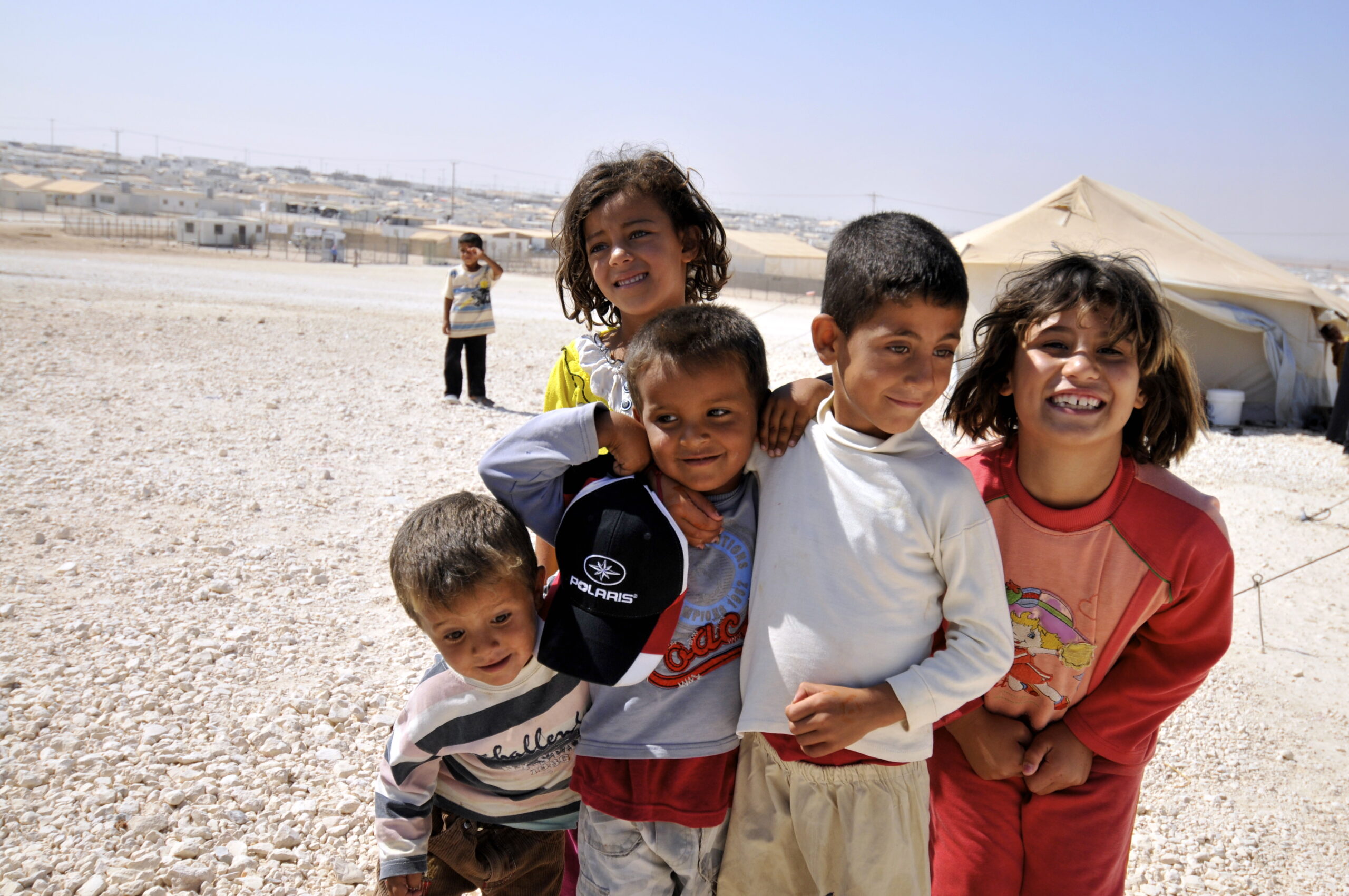Before the escalation of the Syrian conflict, general immunization rates for Syrian children were more than 90% [1]. Today, less than 70% of Syrian children are immunized [2]. This deterioration has manifested itself in at least 13 cases of polio as of November 2013 [3], a striking number for a debilitating disease eradicated in Syria more than a decade ago – and one that could be prevented with single drops of a vaccine developed in 1955.
The political conflict has led to this outbreak. The Syrian healthcare system today lacks the most basic infrastructure as a result of the surrounding instability. Some 60% of its public hospitals have been substantially affected by the conflict [4]. In regions where polio cases appeared, such as Aleppo, Idlib, and Deir-ez-Zor, only 30% of the basic health units are functioning [5]. Apart from the deficiency of healthcare services, the siege on many areas in Syria restricts access to health services and may have very likely contributed to the outbreak.
Polio’s re-emergence represents a threat to the entire Middle East. The cases that rose in northeast of Syria could easily spill into Iraq, Jordan, Lebanon, and Turkey, all of which have been welcoming Syrian refugees almost every day. Red flags were raised, triggering international action. The UNICEF and WHO stepped up for the largest immunization response ever in the Middle East. They aim to vaccinate more than 23 million children against polio in Syria and neighboring countries. Inside Syria, the campaign aims to reach 2.2 million children. To that end, the WHO called on all parties in the conflict to allow the delivery of these vaccines into areas under siege. Whether this target will be reached, however, is in question given the limited access granted to international organizations to provide basic medical supplies, particularly in areas of heavy conflict.
What is to learn from the story of polio in Syria? Simply put, polio is but the first of many infectious diseases likely to hit the children of Syria, so long as this ever more complex conflict continues. With the infrastructure of the Syrian healthcare system collapsing, health centers running out of medical supplies and losing staff, the protracted length of conflict, and prices inflating, children’s access to health and basic nutrition is deteriorating. Those who have fled to neighboring countries often face equally severe hardships. They are exposed to overcrowding, lack of hygiene and sanitation, and malnutrition, all of which are strong precursors for infectious disease outbreaks. Fifty two percent of Syrian refugees are children[6], and the number of total refugees is expected to reach 4 million in 2014[7]. The risk for other infectious diseases including chicken pox, cholera, diarrheal diseases, measles, and acute respiratory infections is rising and may hit hard at any time. And they will hit children the hardest.
Polio’s resurgence should be a wake-up call for both Middle Eastern countries and international organizations to seriously consider the drastic health consequences from infectious diseases on future generations in Syria and the Middle East. Whether in refugee camps or within Syria, any infectious disease that spreads will do so malignantly in the light of the current situation of these children. The results will be devastating, further compromising the immunity of the children and taking away lives in merciless pandemic that can spread throughout the entire region.
Our actions should thus not be stimulated by the lost-lives of young souls, but by the very situation, and its foreseeable health implications for which solutions have been developed and are in our fridges. The polio campaign should be just the start of many campaigns to tackle all potential infectious diseases. International organizations and countries hosting refugees should take precautionary measures. Possible actions include ensuring the availability of the vaccines and drugs in these countries, as well as medical staff, which have been growing critically deficient, particularly in Lebanon.
Efforts should also aim to open at least some restricted areas within Syria for continuous humanitarian and medical provision to provide much-needed supplies and stave off the collapse of the healthcare system. Finally, reliable assessments of the well-being of children inside and outside Syria should be conducted to head down the path of disease prevention. The focus should be particularly on children’s nutrition, given its fundamental role in protecting them from infectious diseases. Special preparations for every coming winter should be set up beforehand to lower the high risk of disease the cold brings into refugee camps. While all the aforementioned steps are difficult, they are not impossible.
Over the centuries wars have caused inevitable crises and the collapse of societies. These crises – from the loss of lives, lack of education, malnutrition and mental health problems – hit vulnerable children particularly hard. But humanitarian action is necessary to respond to disease outbreaks that are preventable with apples, vaccines, and a few spoons on medicine. As the UN noted, the Syrian conflict is creating ‘a generation of traumatized, isolated and under-educated children …’[8] We are losing the Syrian children in all aspects with every breath. It’s time to step up and save those who are struggling to survive. And the start should be with the most critical right of all – basic health.
[1] UNICEF (2013): Over 20 million children to be vaccinated in Syria and neighboring countries against polio, say WHO and UNICEF. URL: http://www.unicef.org/media/media_70833.html. Retrieved on Jan 9th 2014.
[2] Ibid.
[3] WHO (2013): Polio in the Syrian Arabic Republic -update. URL: http://www.who.int/csr/don/2013_11_11polio/en/index.html?utm_source=Sailthru&utm_medium=email&utm_term=*AfPak%20Daily%20Brief&utm_campaign=AfPak%20Daily%20Brief%2011-12-13. Retrieved on Jan 9th 2014.
[4] WHO (2013): Health impact of the crisis in the Syrian Arab Republic. URL: http://www.emro.who.int/emergency/eha-news/syria-sitrep.html. Retrieved on Jan 9th 2014.
[5] Ibid.
[6] Al Jazeera (2013): UN urges support for Syrian refugee children. URL: http://www.aljazeera.com/news/middleeast/2013/11/un-urges-support-syrian-refugee-children-201311297491165924.html. Retrieved on Jan 9th 2014.
[7] Youssef, F. (2013): UNHCR: Syrian refugees to hit 4 million mark in 2014. URL: http://www.aawsat.net/2013/12/article55326069. Retrieved on Jan 9th 2014.
[8] Yoon, S.(2013): Syria War Creates A Generation of 1.1 Million Children. URL: http://www.bloomberg.com/news/2013-11-29/syria-war-creates-generation-of-1-1-million-lost-children.html. Retrieved on Jan 9th 2014.
